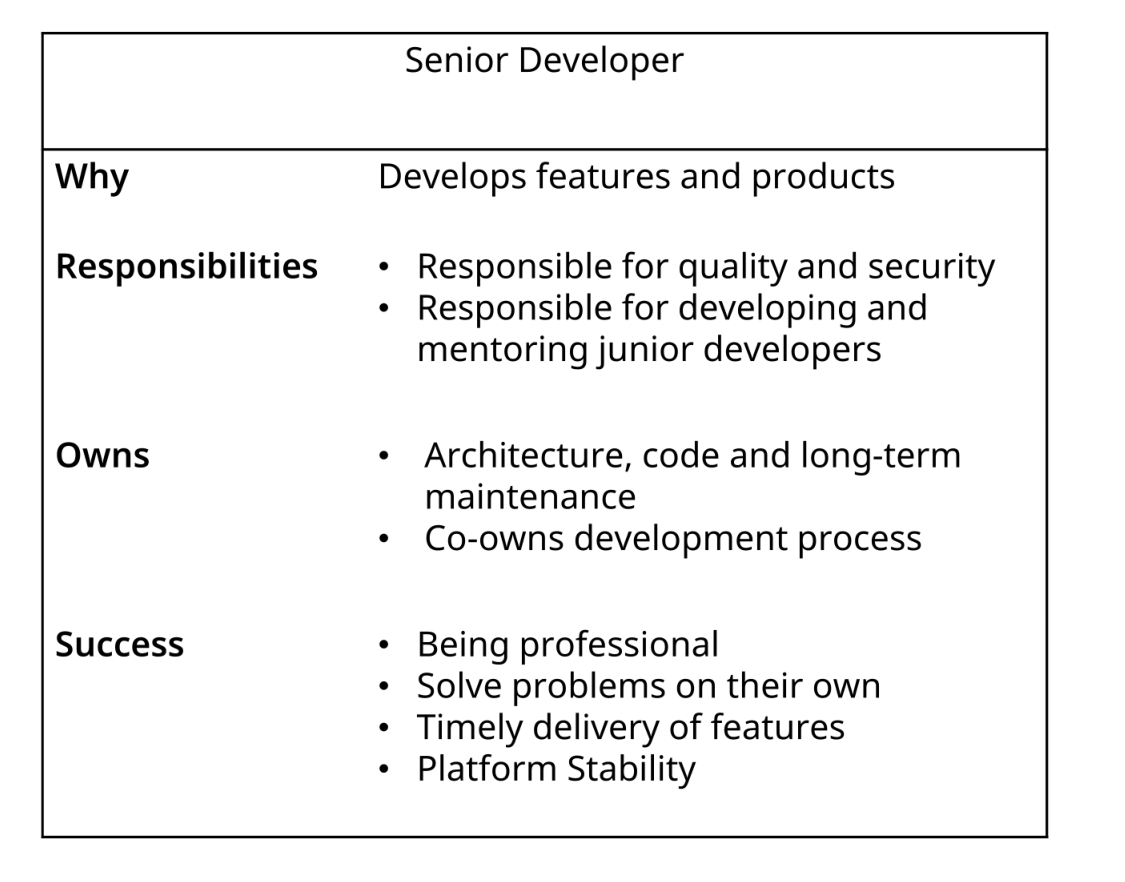Engineering Career Ladder
A simple and effective engineering career ladder template for CTOs and engineering managers to grow, promote, and evaluate software engineers.
TL;DR: A practical engineering career ladder template with dual progression tracks (management and senior engineer), role-based accountability, and structured promotion processes for startups with 10-50 engineers.
Many CTOs and engineering managers struggle with career development when they reach around 10 engineers. At that point some engineers have been with the company for a while and demand a promotion. Because they fear chaos, CTOs are looking for a career framework. While there are many out there, most are too complex create for big companies. They overwhelm engineers and are not helpful as guidance.
Why?
Why would you define a career ladder? Perhaps you’re have a non mainstream organization and don’t need one. Perhaps you don’t have the problems of others, so you don’t need one. Many CTOs though need a career ladder at one point in growing their team.
- Some people defined them selves by explicit progression
- No politics
- Everyone knows how it works and what to expect
- Easier for you to manage, hold people accountable and make them own things and take responsibility
What about the ladders out there?
To big, build for large companies. Do not work if you have 10-50 engineers.
Example
Here is a simple example that works. You start with interns, then juniors up to a tech lead. The tech lead is half-way a manager without people management responsibilities.
At that point the career ladder splits into two tracks:
- Management track
- Senior engineer track
For many startups it’s better that seniors and tech leads chose the management track - first because depending on your planned org structure you need team leads and engineering managers. Second because you need to have work for staff engineers and principals. If everyne wants to become a staff engineer, your organisation needs to be able to deal with this.

- Intern
- Junior
- Developer
- Senior
- Tech Lead
Then we split into a management track:
- Team Lead
- Engineering Manager
- VP of Engineering
- CTO
And a senior engineer track:
- Staff Engineer
- Principal Engineer
- Fellow Engineer
Basically the same Y-ladder can be applied to QA, Devops and Data.
Promotion and Salary based on role descriptions Role descriptions used for performance management and holding developers accountable Role descriptions around ownership and responsibilities
Role dscriptions
- Promotion and Salary discusssions ongoing in 1:1s
- Identify gaps
- Offer support, e.g. projects, presenting to board, managing architecture decisions, managing interns

Promotions
- 80% of next role
- open position
- budget ok and planned
- 6 months ahead
- 2x a year, 1.2. and 1.8 / 90:10 split
- Formalizing, discussions over the year
Salary
- based on band
- increase 2x a year
- CTO gets budget, e.g. 10%
- distributes budget to department heads or team leads, e.g. 8%, 10%, 10%, 13%, 8%
- based on team performance, needs (avg. in team to low, team progressed)
- team lead distributes to individuals
